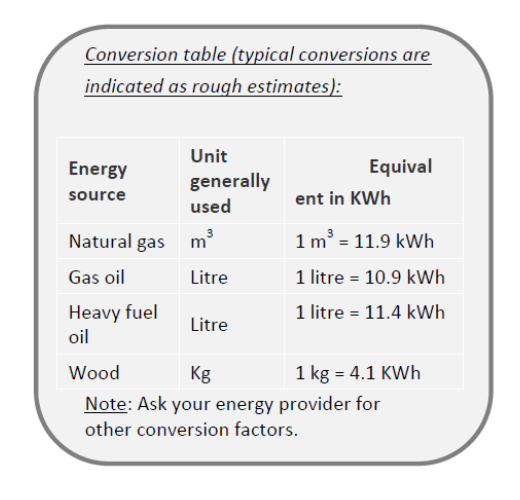Energy consumption monitoring is highly recommended to establish fundamental information on energy use in the hotel. It can help reveal problems (e.g. abnormal changes in energy consumption), identify energy saving opportunities, and verify the effectiveness of the energy conservation measures you have implemented.
Energy bills are generally the main source of data, which is why it is important to keep track of your energy bills and to analyse them regularly.
If you are running a large hotel, it can be useful to determine the energy consumption of some individual areas and departments (e.g. office, kitchen, rooms per floor, apartments…).
The easiest way to access this information is to install energy sub-meters. But before deciding to install sub-meters, you should have a scheme in mind so that staff can take simple corrective actions based on the sub-metering information.
How to proceed to analyse your energy consumptions?
Data collection
Gather your monthly energy bills and check that each energy bill contains information on: total amount of energy consumed, cost per unit, total cost. Also gather your energy bills from the two previous years.
Data analysis
Annual consumption assessment: For each year you have data, prepare a table showing the total annual Consumption and cost of each type of energy (electricity, gas, etc.). Also indicate the main end-uses of the different energy sources used. Use this data to calculate the energy performance index (per m2 of indoor area) and the energy consumption per guest night sold (to compare with other hotels).
In order to compare your data you can use the benchmark provided below by Hotel Energy Solutions

Evolution of energy consumption with time:
See if your energy consumption (total consumption and consumption of each energy source) has changed significantly from one year to another (and then from one month to another). Investigate if there is a correlation between energy consumption and occupancy (i.e. guest nights sold) or weather conditions.
How to find out the energy use of individual areas or pieces of equipment:
The most obvious solution in many cases is to install a sub-meter which can measure the energy use in just one separate circuit. Where many circuits are to be monitored, sophisticated systems which network these meters together and feed data back to a computer can be used.
For monitoring equipment or sub-circuits which are ‘hard-wired’, energy monitors with sensors which can be wrapped round the connecting wires can be used. These log energy use over an observation period and store the data for download to a computer for analysis.
Improved staff engagement
Informing your staff on hotel energy consumption is a good way to encourage them to take part in energy conservation measures. Note that some hotels have decided to offer their staff a bonus when energy consumption is decreased.
Environmental benefits
Corrective actions resulting from energy monitoring can lead to 8-10% of energy saving. Knowing your energy consumption patterns will help you get the best possible energy deal in the future.
Cost effectiveness
Implementing this measure will cost almost nothing as reading energy consumption cost 0 € and installing submeters cost approx. 40-50 € + workmanship, but
Example:
For a 1,000 m2 hotel with an annual energy consumption of 250 kWh/m2 (47% electricity and 53% of gas), and if French emission factors are applied, a 10% energy saving on electricity and gas represents:
